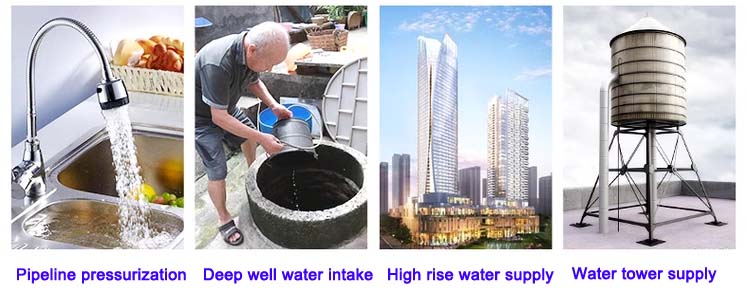Japanese
- Afrikaans
- Albanian
- Amharic
- Arabic
- Armenian
- Azerbaijani
- Basque
- Belarusian
- Bengali
- Bosnian
- Bulgarian
- Catalan
- Cebuano
- Corsican
- Croatian
- Czech
- Danish
- Dutch
- English
- Esperanto
- Estonian
- Finnish
- French
- Frisian
- Galician
- Georgian
- German
- Greek
- Gujarati
- Haitian Creole
- hausa
- hawaiian
- Hebrew
- Hindi
- Miao
- Hungarian
- Icelandic
- igbo
- Indonesian
- irish
- Italian
- Japanese
- Javanese
- Kannada
- kazakh
- Khmer
- Rwandese
- Korean
- Kurdish
- Kyrgyz
- Lao
- Latin
- Latvian
- Lithuanian
- Luxembourgish
- Macedonian
- Malgashi
- Malay
- Malayalam
- Maltese
- Maori
- Marathi
- Mongolian
- Myanmar
- Nepali
- Norwegian
- Norwegian
- Occitan
- Pashto
- Persian
- Polish
- Portuguese
- Punjabi
- Romanian
- Russian
- Samoan
- Scottish Gaelic
- Serbian
- Sesotho
- Shona
- Sindhi
- Sinhala
- Slovak
- Slovenian
- Somali
- Spanish
- Sundanese
- Swahili
- Swedish
- Tagalog
- Tajik
- Tamil
- Tatar
- Telugu
- Thai
- Turkish
- Turkmen
- Ukrainian
- Urdu
- Uighur
- Uzbek
- Vietnamese
- Welsh
- Bantu
- Yiddish
- Yoruba
- Zulu
Telephone: +86 13120555503
Email: frank@cypump.com
10月 . 20, 2024 13:47 Back to list
slurry pump cover plate liner
Understanding Slurry Pump Cover Plate Liners Importance and Applications
Slurry pumps play a critical role in various industries, especially in mining, wastewater treatment, and chemical processing. Among the essential components of a slurry pump, the cover plate liner is pivotal for maintaining the pump's efficiency and durability. This article will delve into the significance, materials, and applications of cover plate liners, highlighting their impact on slurry pump performance.
What is a Cover Plate Liner?
The cover plate liner is a replaceable part of a slurry pump that forms part of the pump casing. Its primary function is to protect the internal components of the pump from wear and damage caused by the abrasive nature of the slurry being pumped. Slurry can contain a mixture of solid particles and liquids, and the flow can be incredibly harsh on pump parts. Thus, the cover plate liner must be robust and designed to withstand extreme conditions.
Importance of Cover Plate Liners
1. Wear Resistance One of the most significant advantages of a quality cover plate liner is its resistance to wear. Slurry components often contain hard, abrasive particles that can quickly degrade standard materials. High-quality liners made from wear-resistant materials extend the life of the pump, reducing downtime and maintenance costs.
2. Cost Efficiency Although the initial investment in high-performance liners might be higher, they ultimately lead to lower operational costs. Reduced wear means fewer replacements and less frequent maintenance, which translates to savings in both time and money for operations relying heavily on slurry pumps.
3. Performance Optimization A well-designed cover plate liner contributes to the overall efficiency of the pump. By minimizing flow turbulence and optimizing the hydraulics within the pump, these liners can enhance performance, leading to improved flow rates and energy efficiency.
4. Customizability Manufacturers often provide a range of options for cover plate liners, allowing industries to select materials and designs that fit their specific requirements. Custom liners can be tailored to handle particular types of slurries, improving pump reliability and performance.
slurry pump cover plate liner

Materials Used for Cover Plate Liners
1. Natural Rubber This material is known for its excellent elasticity and resistance to abrasion. Rubber liners are generally used in applications involving less aggressive slurries or where high flexibility is required.
2. Polyurethane Often chosen for its superior abrasion resistance and versatility, polyurethane liners can handle various slurry compositions while providing reduced wear and extending liner life.
3. High-Chrome Alloys For more aggressive applications with highly abrasive materials, high-chrome alloys offer exceptional wear resistance and durability. These materials are designed to withstand severe conditions, making them ideal for mining and mineral processing.
4. Ceramic Materials In specialized applications where extreme wear is a concern, ceramic liners can be used. These are incredibly hard and resistant to abrasion, making them perfect for high-wear environments.
Applications of Cover Plate Liners
Cover plate liners are used across numerous industries. In mining, they help transport slurry containing ore and other minerals efficiently. In wastewater treatment, they play a crucial role in moving sludge and other byproducts. Similarly, in chemical processing, these liners contribute to the safe transport of various mixtures, ensuring the system operates smoothly.
Conclusion
The cover plate liner is an indispensable component of slurry pumps, enhancing their performance and longevity. With various materials available, industries can choose the most suitable liner to match their specific requirements. Investing in high-quality cover plate liners not only improves pump efficiency but also reduces maintenance costs, making them a vital consideration for any operation relying on slurry pumps. Understanding their importance and functionality is crucial for anyone involved in industries that use these powerful pumping systems.
-
Reliable Non-Clog Sewage Pumps with GPT-4-Turbo Tech
NewsAug.04,2025
-
High-Performance Air Pumps for Sand & Gravel | Efficient Transport
NewsAug.03,2025
-
ISG Series Vertical Pipeline Pump - Chi Yuan Pumps Co., LTD.|Energy Efficiency, Corrosion Resistance
NewsAug.03,2025
-
ISG Series Pipeline Pump - Chi Yuan Pumps | Energy Efficiency&Compact Design
NewsAug.03,2025
-
ISG Series Vertical Pipeline Pump - Chi Yuan Pumps Co., LTD.|High Efficiency, Low Noise, Durable
NewsAug.02,2025
-
ISG Series Vertical Pipeline Pump - Chi Yuan Pumps | High Efficiency, Low Noise
NewsAug.02,2025










